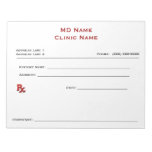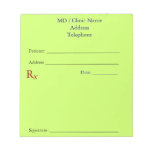Managed care contracts and narrow networks temporarily stifled traditional referral building. But the patient rebellion against limited choices pushed the pendulum back to center, and today, high-deductible health plans and out-of-network options have patients once again voting with their feet. Refreshing your referral building activity has never been more important to patient volume or practice revenue.
Here are five ways a modern practice can use the Three A's in its referral building.
1. Capture and track referral data accurately.
This is the baseline of any effective referral building strategy, but it is very often skipped. Here's how to make sure the data is accurate and meaningful:
1) Create detailed referral categories – for example, "Edwina Jones, MD," not, "Doctor." Or, "Vitals," not "Internet."
2) Update the registration form or patient portal registration field to say "Who may we thank for referring you?" It's more effective at getting patients to respond than "Referred by:"
3) Train the staff to verify that patients provide the information and, if they don't, to ask them verbally.
4) Train the staff how to properly enter the information patients provide into the right detailed category.
5) Create a protocol for how new categories are added and who is responsible. If there is no plan for adding new referral categories, busy staff will end up overutilizing "Other," which will skew the data.
6) Generate quarterly reports and review referral sources.
2. Expand availability using technology.
Years ago, we advised specialists to offer a private, direct phone number so referring physicians could quickly reach the practice. Today, the options are more expansive.
For example, you might offer access to secure text messaging or the physician social network Doximity as a way for referrers to connect about patients. We even have some surgical clients that post forms and information about how to refer patients on a special web page designated for referring physicians?
You also can make yourself more available to patients who have urgent needs, or who live out of town, using ZocDoc, to find and schedule an appointment. And of course, your website or patient portal can offer patients online registration and appointment requests, inquiry forms, online payment options, and more.
3. Deliver patient experiences that garner positive feedback.
In the age of online review sites and value-based care arrangements, affability (a.k.a., bedside manner) is more important than ever. The ire of one unhappy patient can spread like wildfire on rating sites, and, make no mistake, patients and potential patients read and act on these reviews. Plus, more and more hospital employment agreements include patient and staff satisfaction in their physician compensation and bonus plans.
Differentiate yourself as a practice that delivers amazing patient experiences and your online reviews and patient referrals will rise.
4. Verify and promote your online clinical quality indicators.
Demonstrating clinical ability is often easier to do with referring physicians because they are trained to and able to discern your "quality." Patients, not so much. With a service as complex as healthcare, they will typically focus more on the experience and convenience.
You can boost this, however, by making sure your scores on Healthgrades, CMS's Physician Compare, and payer sites are accurate. Direct a staff member to organize or print this information for physician review. Take action if information is inaccurate. And use positive scores and reviews in your referral building and social media efforts.
5. Don't let referral relationships lapse.
If physicians are delivering the Three A's but you're still seeing a drop in referral volume, it might be an issue of relationship lapse. Patients and referring physicians are busy. Referring practice staff–maybe the ones who knew you best–leave their roles.
Take time each quarter to cultivate relationships with physicians, patients, and influencers so they don't go stale. Send handwritten thank you notes. Or email referring physicians, announcing a new service or expanded office hours. Host a dinner in the private room of your favorite restaurant for five or six of your best referrers and their spouse or manager. In between casual conversation and "shop talk," ask the group how you and your team can continue to earn their trust and their referrals.




No comments:
Post a Comment